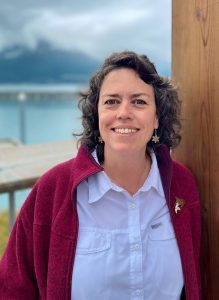
By Donna Schantz
Executive Director
In February, the Council was certified by the U.S. Coast Guard as the Alternative Voluntary Citizens Advisory Group for Prince William Sound under the Oil Pollution Act of 1990 (OPA 90 or the Act). This process is done annually, with every third year including a public comment period. I wish to thank the individuals, entities, industry representatives, elected officials, and others who sent letters to the Coast Guard this year in support of our work. It takes all of us working together to help ensure that strong oil spill prevention and response measures remain in place.
The Council strives to meet OPA 90 mandates as closely as possible. The Act was drafted in the midst of the chaos and urgency that followed the Exxon Valdez oil spill, or EVOS. While some areas of the Act are perhaps not well defined, the intent seems extremely clear: the Council is to represent communities and interests in the entire EVOS-affected region, from Valdez down to Kodiak.
The Act’s mandate for the Council to develop long-term partnerships with government and industry, while also directing us to help shatter the previous complacency of those groups, is an example of one of the less clear sections. This is a challenging mission to achieve. It is difficult to maintain partnerships with those to whom you must also provide advice, and sometimes critical feedback, especially during times of serious reductions in staffing, resources, and budgets for those entities. It is not clear if those who wrote the Act ever meant for the two functions to be compatible. They left that up to us to sort out, which we are still doing 34 years after the spill.
Backsliding and diminishment of regulatory oversight has been a concern of the Council for years. The Council believes the revisions to regulations implemented by the Alaska Department of Environmental Conservation in February 2023 have reduced protections for our region and the state. For example, requirements for drills and exercises used to allow for two per year and now the maximum is only one every five years (with an option of one additional per year). This problem can be distilled down to the department lacking the level of resources and leadership support needed to allow for the maximum number of drills and exercises.
The Government Accountability Office, or GAO, did a review in 1991 that stated federal and state monitoring agencies had not effectively overseen the Valdez Marine Terminal. Bureau of Land Management officials told them at the time that the Joint Pipeline Office was not a regulator, with agencies instead relying on Alyeska to police itself. They concluded that the recent establishment of the Joint Pipeline Office was a positive step, but that its success was hindered unless leadership, firm commitments, and secure funding from all regulatory agencies are in place. That was over 20 years ago.
If there is a major spill tomorrow, we can pretty much write the report as to what happened. Cuts to budgets, staffing, and resources within industry and regulatory agencies; reduced regulatory oversight; loss of institutional knowledge and technical specialists… all of these things increase risk. These are the factors that keep our staff and volunteers awake at night.
Alyeska, as well as the regulatory agencies charged with overseeing them, have dedicated staff working diligently to ensure the safe operation of the Valdez Marine Terminal and associated tankers. However, as budgets get squeezed, and reductions in staffing and resources ensue, the result is inevitable; there are not enough dedicated staff and resources to effectively do their jobs.
So many have worked since EVOS to prevent another disaster. Unfortunately, it often takes an accident to get attention on the problems plaguing prevention and response systems. Whether heeded or not, the Council will continue to provide advice in the spirit of promoting change to maintain and improve upon the prevention and response systems designed to protect our region. We hope that the long-term partnerships that we have worked diligently to establish will help prevent further backsliding, identify and mitigate risks, and facilitate improvements designed to prevent another accident.